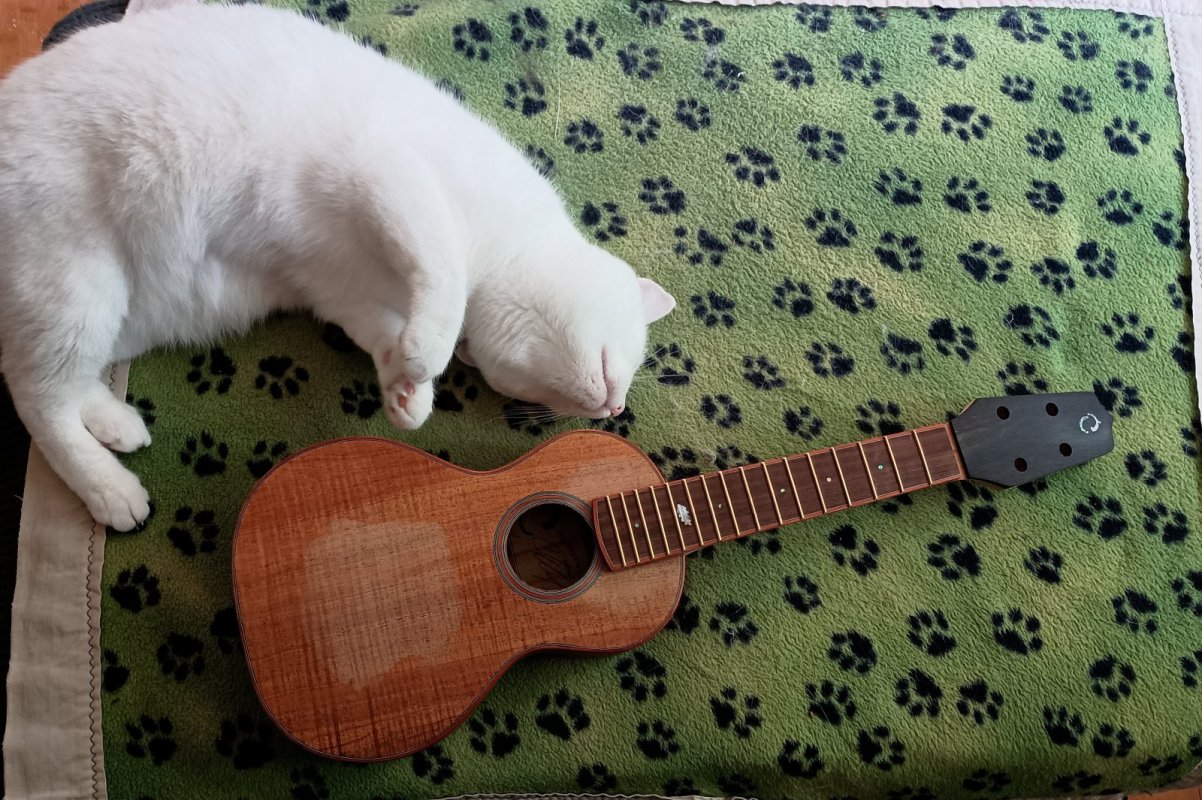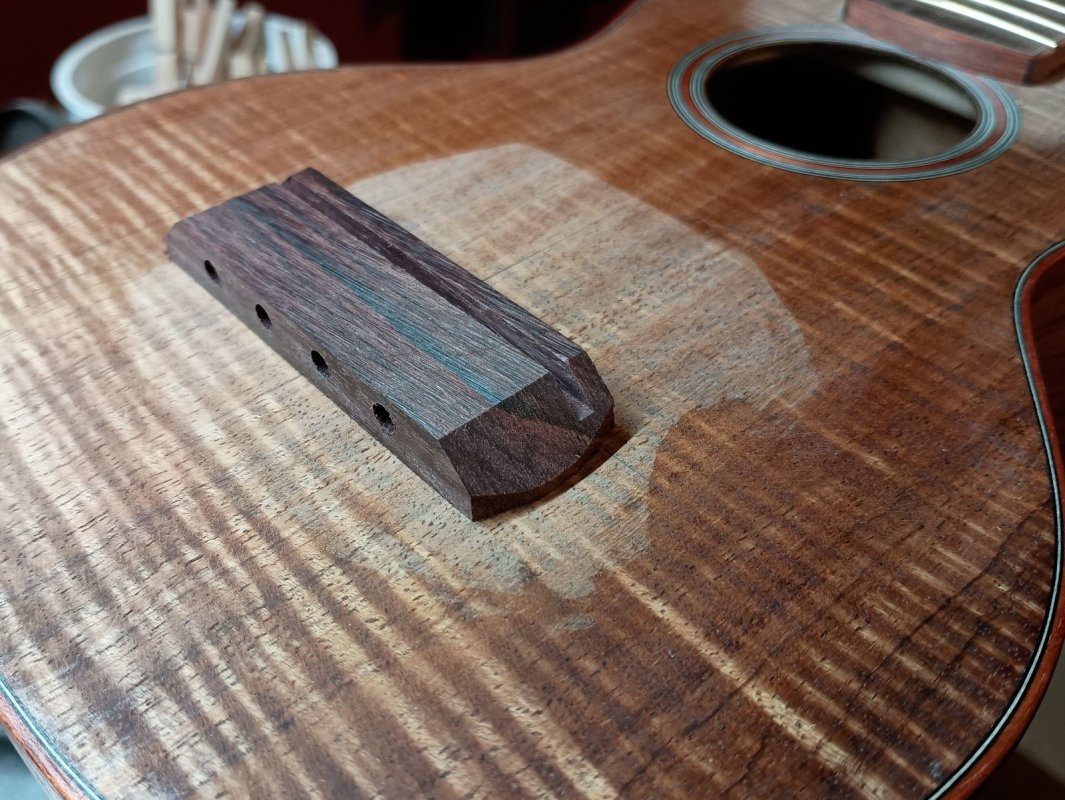And bet you do on the next one. Truly, the best guitar you have ever built was the last one.Sadly, I tend more to “Damn, I wish I’d done this“ or “Why didn’t I do that?”
You are using an out of date browser. It may not display this or other websites correctly.
You should upgrade or use an alternative browser.
You should upgrade or use an alternative browser.
AHG (and sometimes U)
- Thread starter AcornHouse
- Start date
- Joined
- Feb 11, 2009
- Messages
- 23,427
- Reaction score
- 19,289
- Location
- NJ (The nice part)
- Guild Total
- 112
Sadly, I tend more to “Damn, I wish I’d done this“ or “Why didn’t I do that?”
Yeah, I get that. "A poem is never finished, only abandoned." ~ Paul Valery
I remember seeing an interview with SRV and someone commented on his great style and he replied, "That's funny because all I hear is Albert King, Jimi Hendrix, Freddie King, etc." We are all our own worst critics.
AcornHouse
Venerated Member
I got a little worried when I was working out my clamping strategy (always BEFORE you even open the glue bottle) because I couldn't find a clamp that could fit through the soundhole. Then I realized that the neck block extends far enough in that it will take the force of exterior clamps without danger of crushing the box.
So, fishies, do your job!

So, fishies, do your job!

Chris (Acornhouse and Cozad too), I think it's great that you take a critical eye to your creations, but I really hope you do take a moment to bask in the beauty (and achievement through technical difficulty) of what you are doing here. Life is very short. Revel in the moment.Sadly, I tend more to “Damn, I wish I’d done this“ or “Why didn’t I do that?”
AcornHouse
Venerated Member
Neck joint is nice and solid. It is now one.
Interesting size comparison with my concert size uke which has a 14-1/2" scale length, compared with the 13-1/2" of the soprano. It makes the concert look huge. Just imagine what a tenor would look like (which is the size that artists like Jake Shimabukuro play).
I can see the refinements I've made since that first one.
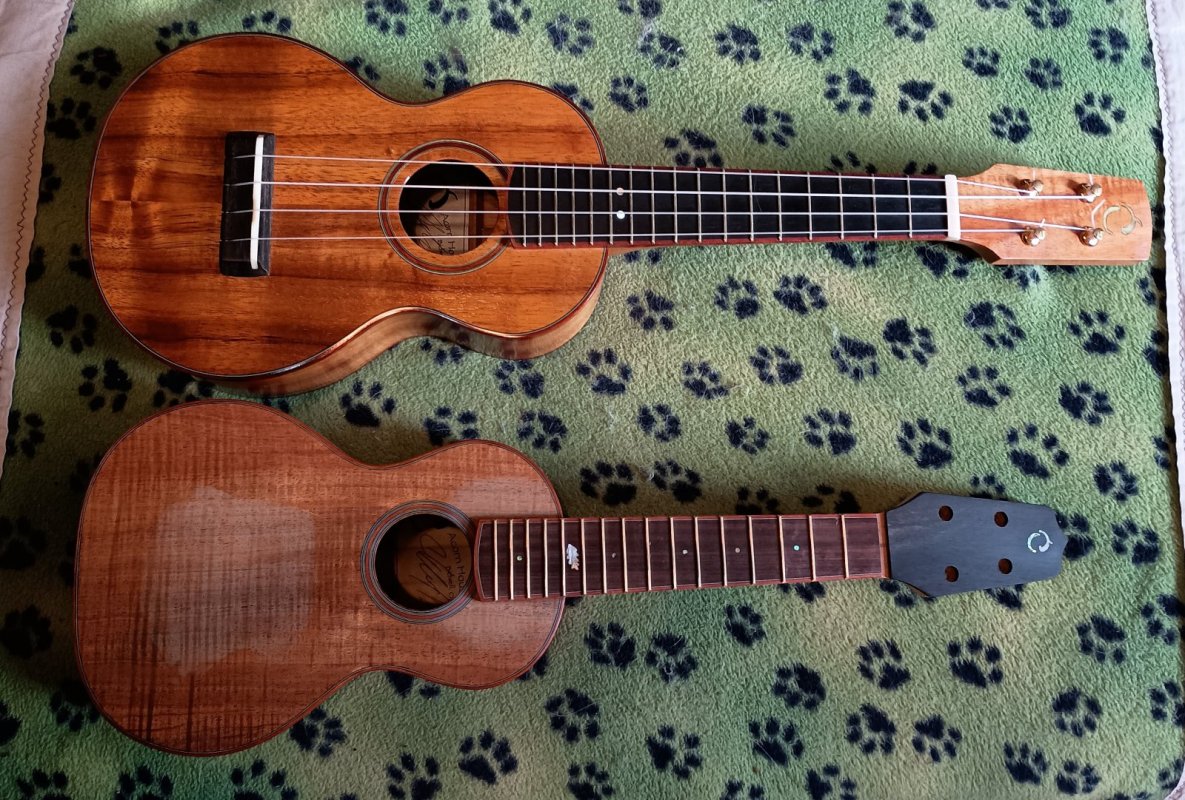
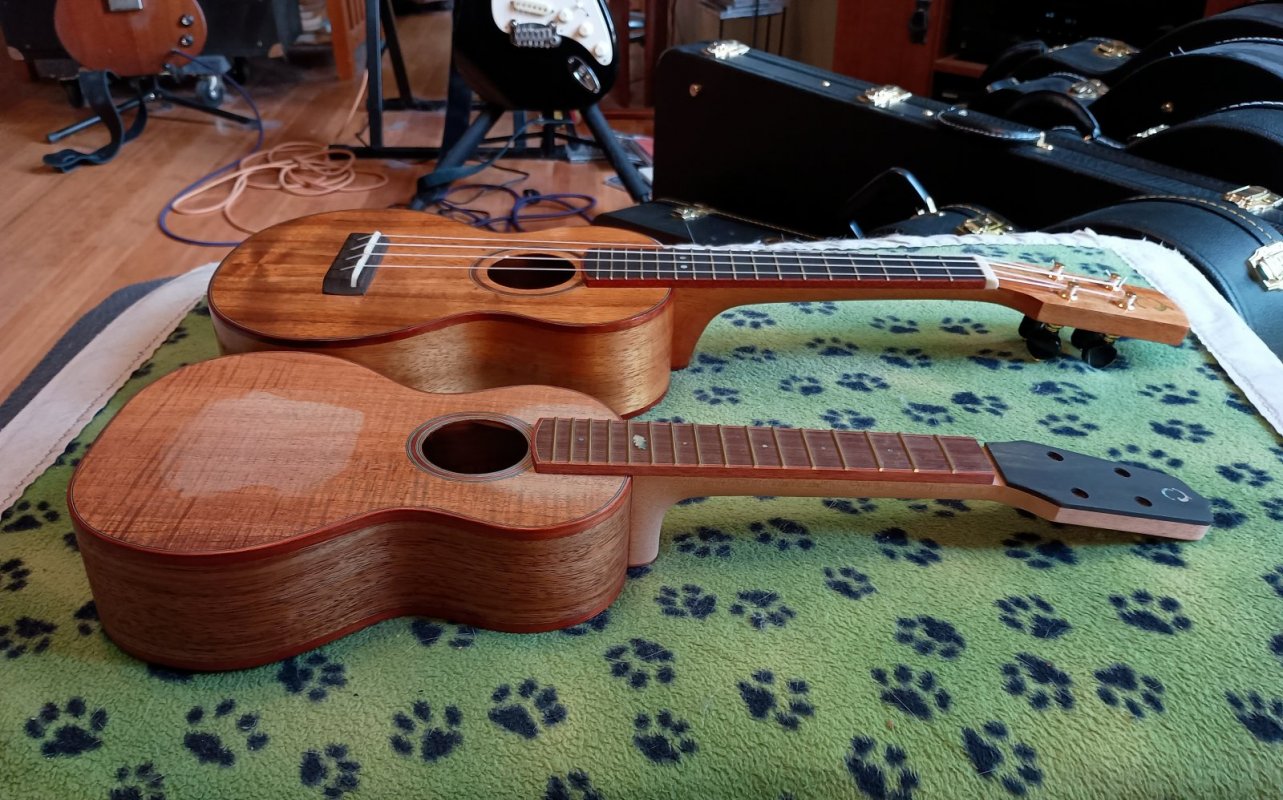
Interesting size comparison with my concert size uke which has a 14-1/2" scale length, compared with the 13-1/2" of the soprano. It makes the concert look huge. Just imagine what a tenor would look like (which is the size that artists like Jake Shimabukuro play).
I can see the refinements I've made since that first one.


AcornHouse
Venerated Member
She really is a beauty, Chris.
The Guilds of Grot
Enlightened Member
She's carefully checking that neck joint!
Probably smells the fish glue!
AcornHouse
Venerated Member
You question her dedication to the task?Probably smells the fish glue!
AcornHouse
Venerated Member
I've been debating what wood to use for the bridge. Ebony to match the headstock or pau ferro to match the fingerboard.
And the winner is...........neither!
Both of those woods are fairly dense and heavy. And since the uke is a nylon stringed instrument with similar bracing, it needs to follow the dictum for a classical guitar: rosewood. The lighter wood allows for more energy to transfer into the top.
Although I may need to cut this blank down a little.
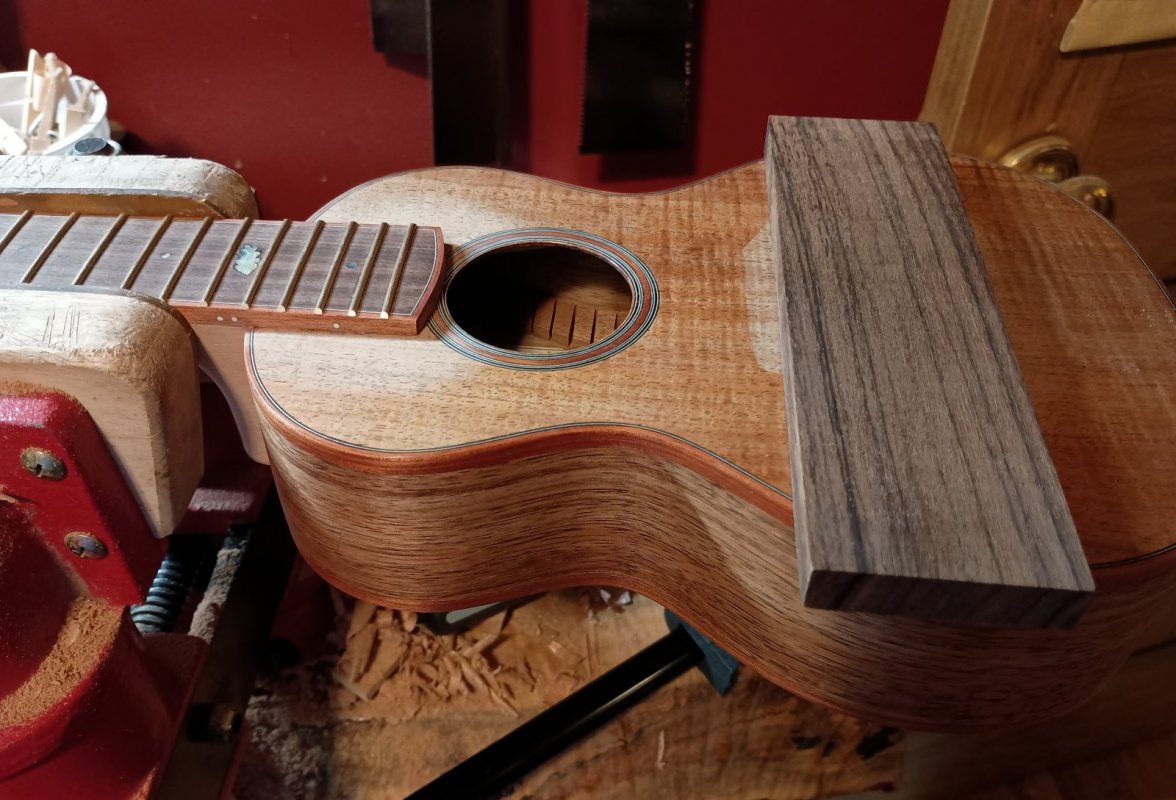
And the winner is...........neither!
Both of those woods are fairly dense and heavy. And since the uke is a nylon stringed instrument with similar bracing, it needs to follow the dictum for a classical guitar: rosewood. The lighter wood allows for more energy to transfer into the top.
Although I may need to cut this blank down a little.

Do believe you got plenty!I've been debating what wood to use for the bridge. Ebony to match the headstock or pau ferro to match the fingerboard.
And the winner is...........neither!
Both of those woods are fairly dense and heavy. And since the uke is a nylon stringed instrument with similar bracing, it needs to follow the dictum for a classical guitar: rosewood. The lighter wood allows for more energy to transfer into the top.
Although I may need to cut this blank down a little.

- Joined
- Feb 11, 2009
- Messages
- 23,427
- Reaction score
- 19,289
- Location
- NJ (The nice part)
- Guild Total
- 112
cutting the wood kills the tOanZ. Glue it!
The Guilds of Grot
Enlightened Member
You question her dedication to the task?
No, just the second photo looks like a good smell pose.
AcornHouse
Venerated Member
I quickly rejected that bridge blank (as I knew I would.) Not only was it's color too beige-y instead of red/purple, it had overly large grain lines. Going through my stock of blanks I found this one.
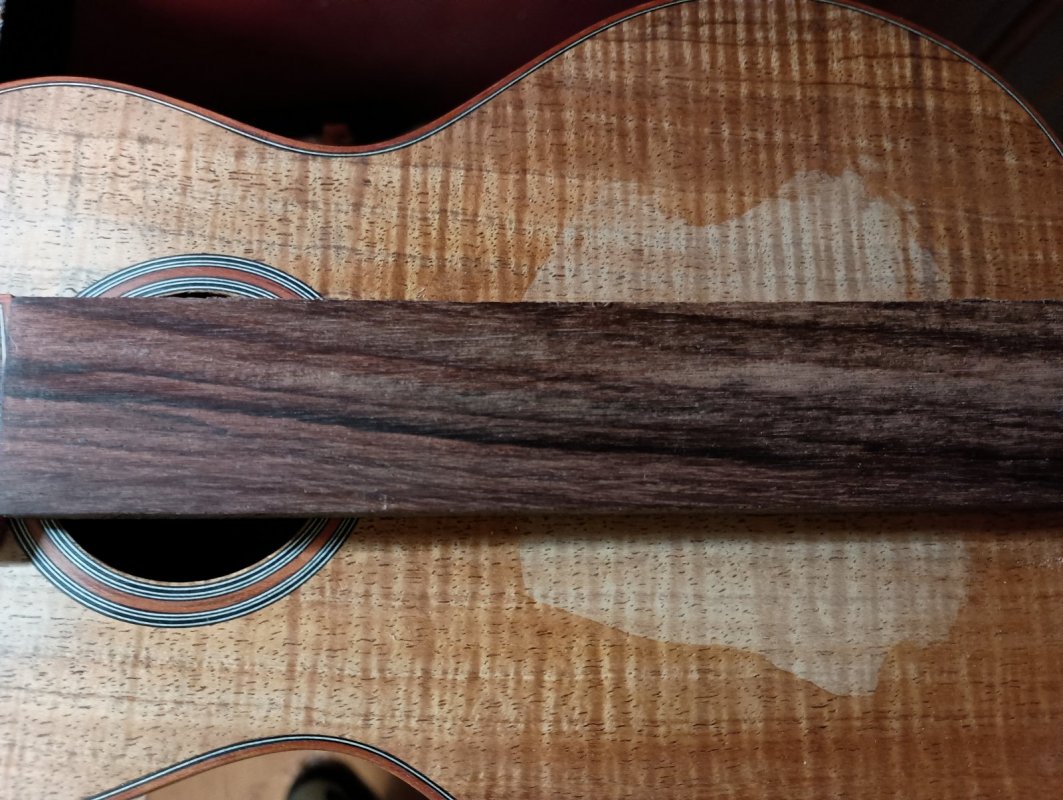
Much better color, but it was entirely unusable for a classical or steel string bridge. The grain is too off axis. But, with a little trimming, it's perfectly fine for ukulele bridges. After cutting in half, I merely followed the grain direction for the lengthwise cuts. Then rough cut to length at right(-ish) angles to its new axis (bold as love.)
Et, voila!
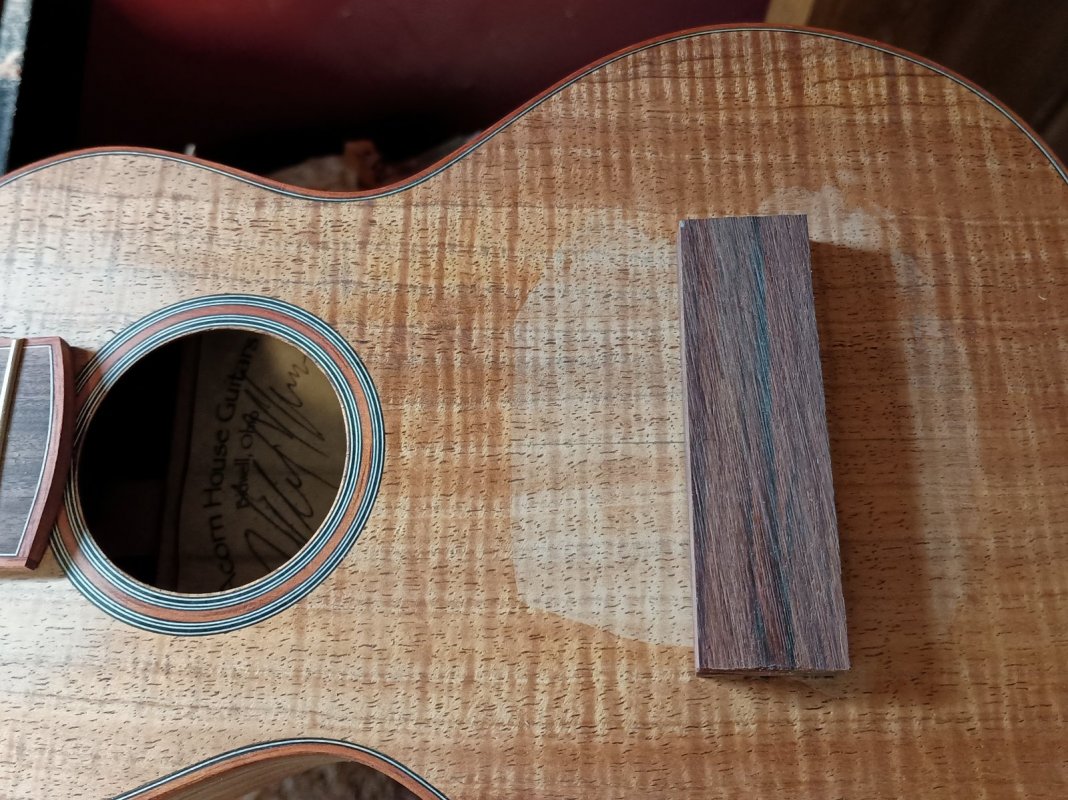

Much better color, but it was entirely unusable for a classical or steel string bridge. The grain is too off axis. But, with a little trimming, it's perfectly fine for ukulele bridges. After cutting in half, I merely followed the grain direction for the lengthwise cuts. Then rough cut to length at right(-ish) angles to its new axis (bold as love.)
Et, voila!

GGJaguar
Reverential Member
Grain line shaming.it had overly large grain lines.
AcornHouse
Venerated Member
After marking out string paths and spacing, and then the desired bridge length, I calculated the bridge height to give me the optimal string height (3mm at the 12th fret.)
Here's a tip for anyone who might need it. Small parts, by themselves, are not safe to run through a drum sander. But, by using a larger board(poplar is ideal, being soft enough to carve, but hard enough to hold), you can get a consistent thickness. DO NOT rely on double sided tape. That spinning drum exerts a lot of rotational force that can send small stuff flying. But if you create a pocket in the larger board, it can push the small piece through.
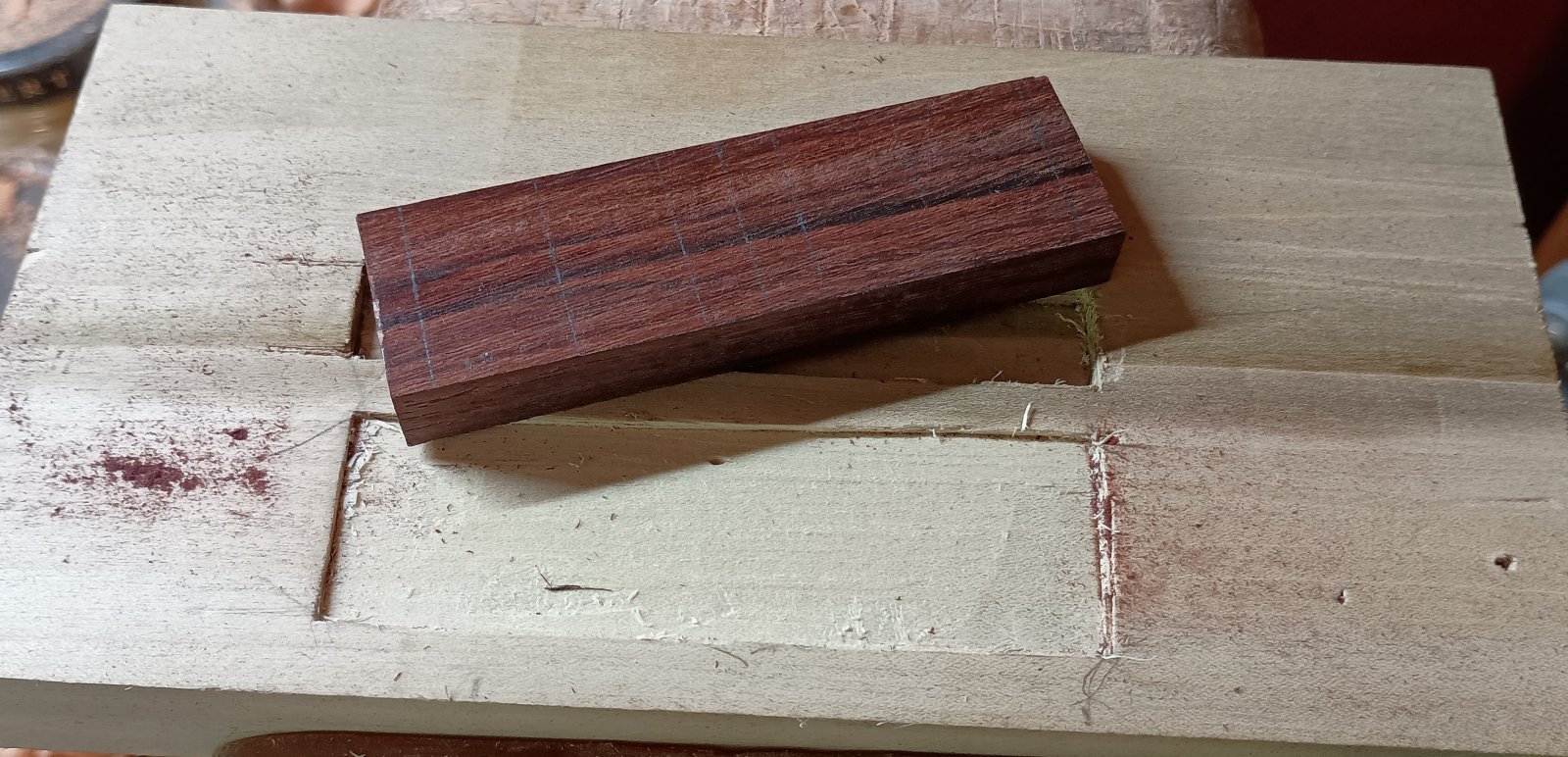
As long as the bottom of your pocket is flat and parallel to the bottom (router plane recommended), you'll get a perfectly thicknesses piece. In this case, 10mm.
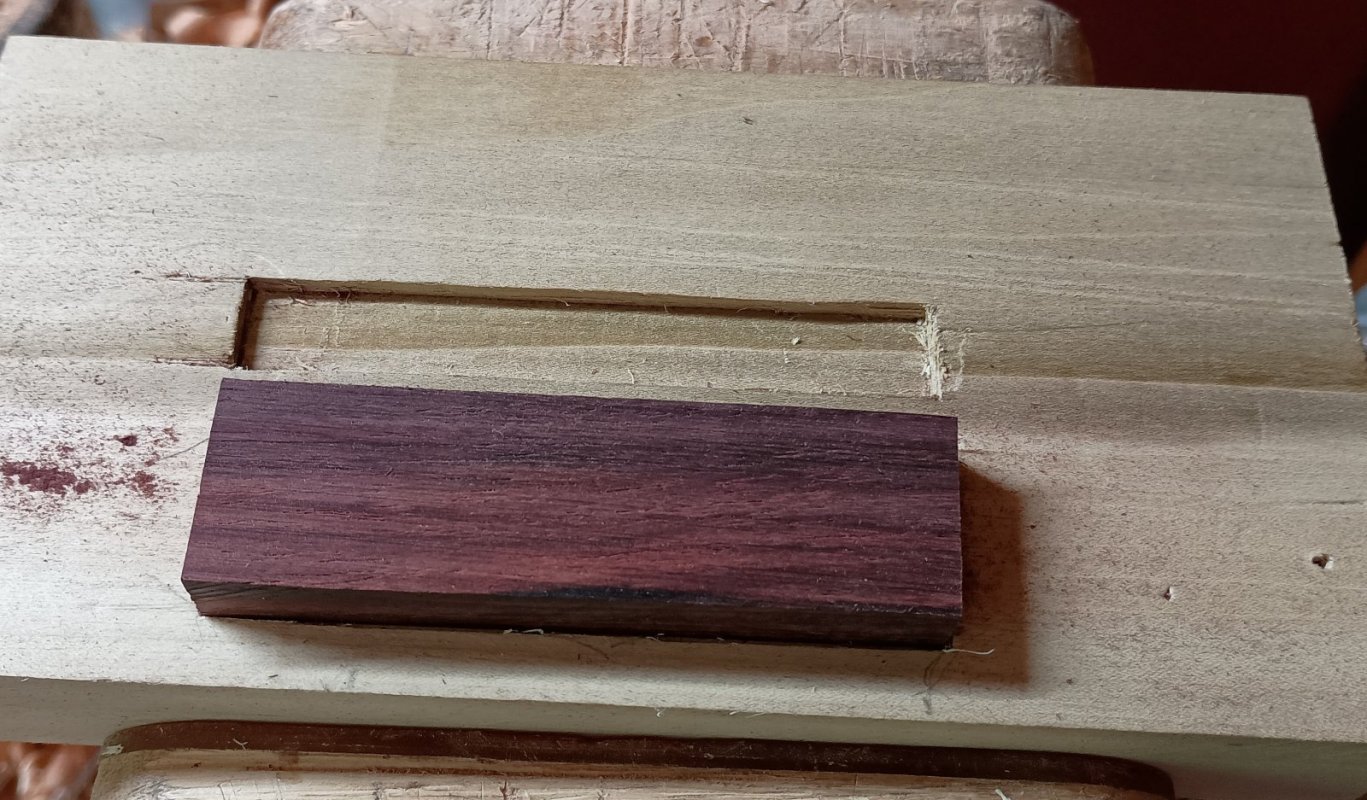
Here's a tip for anyone who might need it. Small parts, by themselves, are not safe to run through a drum sander. But, by using a larger board(poplar is ideal, being soft enough to carve, but hard enough to hold), you can get a consistent thickness. DO NOT rely on double sided tape. That spinning drum exerts a lot of rotational force that can send small stuff flying. But if you create a pocket in the larger board, it can push the small piece through.

As long as the bottom of your pocket is flat and parallel to the bottom (router plane recommended), you'll get a perfectly thicknesses piece. In this case, 10mm.

Great information for any wood worker.

